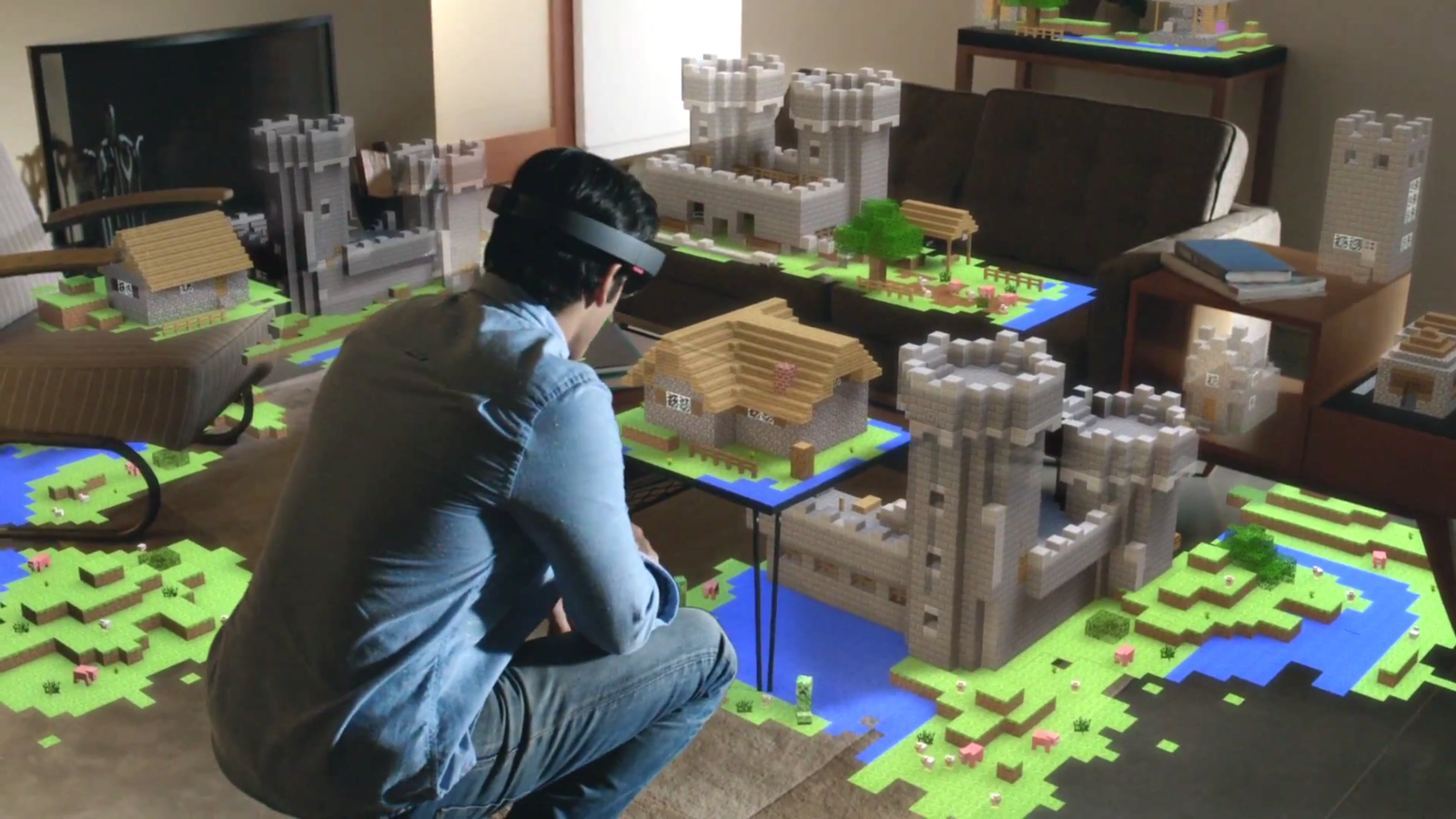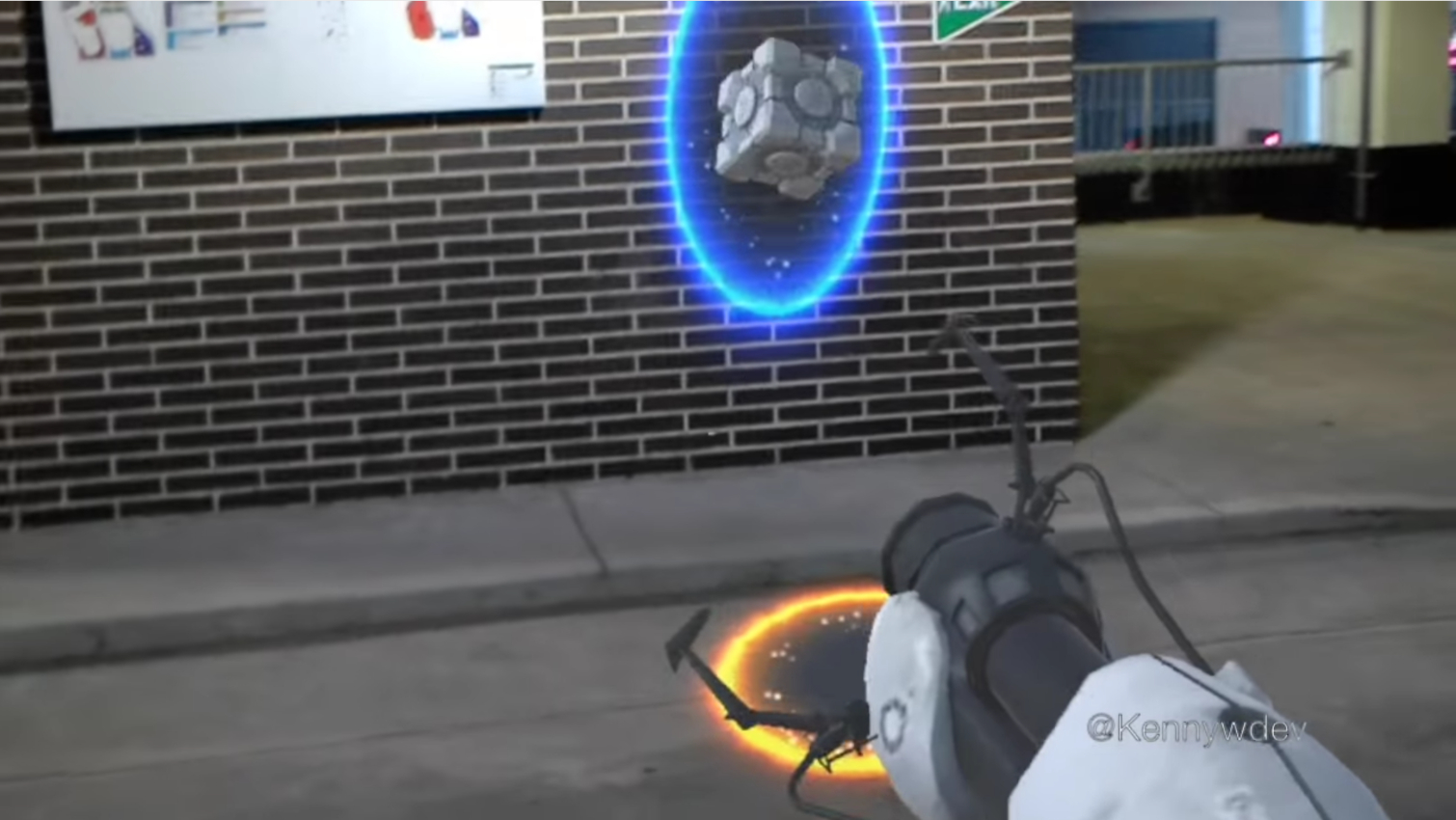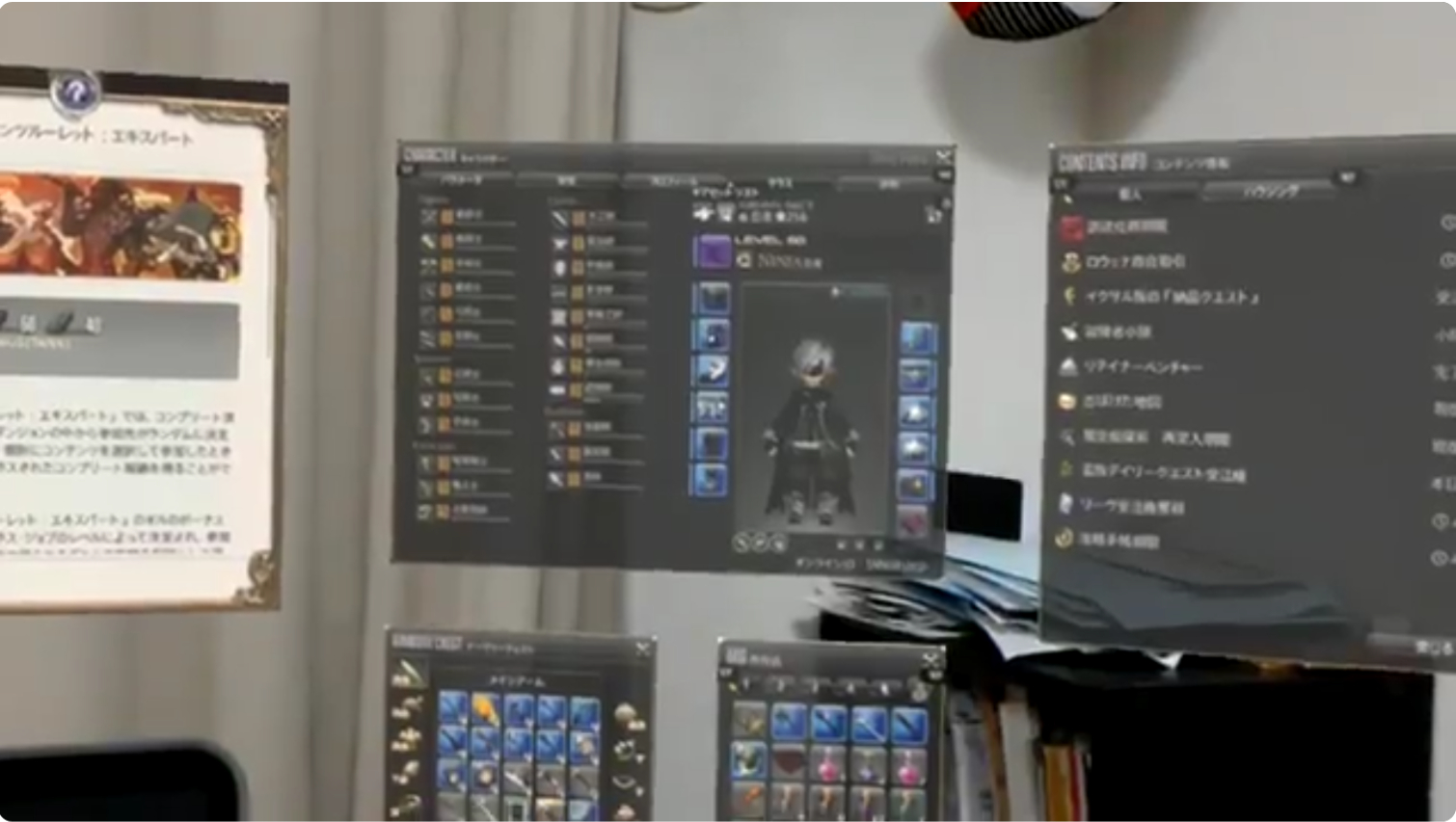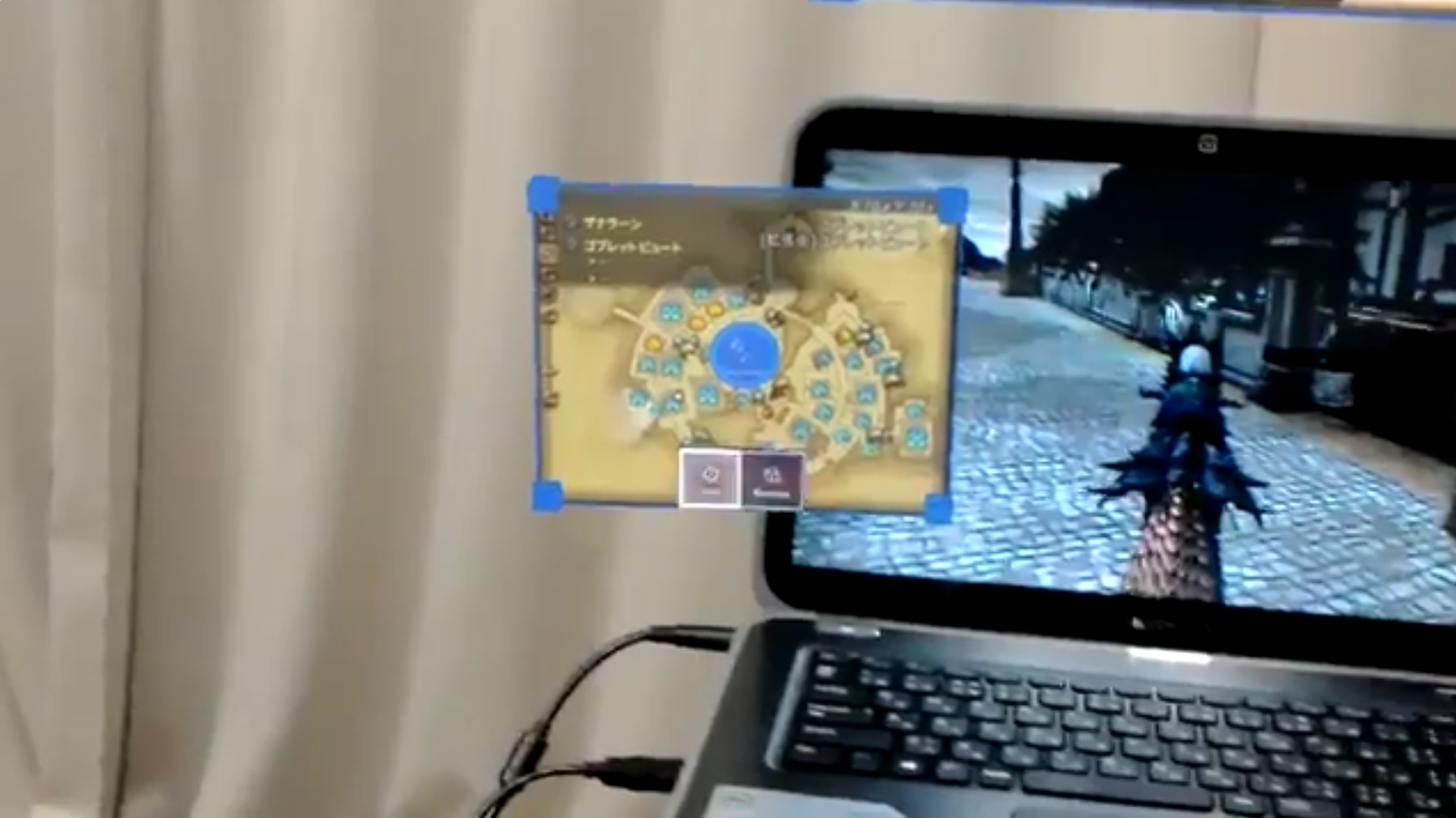Developers Are Experimenting With HoloLens Game Concepts
Last year, Microsoft started shipping HoloLens developer kits to companies and individuals around the world that were willing to part with $3,000 for a shiny new mixed reality headset. As you can imagine, there aren’t that many developers with access to HoloLens kits yet, but the ones who do have Microsoft’s MR system on hand are starting to show promising concepts.
Mixed reality is poised to change how we interact with our computers in ways most people haven’t yet imagined. The idea of working with virtual holographic media superimposed over our real world is such a foreign concept to most people that it still lies in the realm of science fiction for them. But it isn’t science fiction anymore; mixed reality is available today if you have deep enough pockets, and isn’t far off for those of us who don’t.
Last week, we wrote about an experimental piece of software called HoloViveObserver that allows HoloLens and HTC Vive users to interact with a shared VR space, from within the same physical space. The person wearing the Vive would see a virtual world, whereas the HoloLens wearer sees virtual objects in a mixed reality space.
Last week’s news shows a glimpse of the future of productivity, but what about gaming?
Mixed reality opens up myriad possibilities for new game concepts. More than two years ago, Microsoft demonstrated what HoloLens could do for a game like Minecraft. The company presented a tabletop version of the Minecraft map superimposed over a real coffee table, which allowed the HoloLens wearer to play with the world as if it were a bunch of Lego bricks on the table.
HoloLen's Minecraft is an incredibly compelling concept, but that’s just one idea. Imagine playing Valve’s beloved Portal game in your living room, or outside in the real world. Mixed reality technology can do that, and at least one developer already made it happen. He calls himself KennyWdev on YouTube and Twitter, and he released a teaser clip of himself playing Portal in his kitchen, his living room, and outside.
The video shows Kenny W spawning orange and blue portals and dumping a companion cube into them to see how they react. The companion cube interacts with objects in the real environment; for example, it will land on a table or roll down a staircase.
Get Tom's Hardware's best news and in-depth reviews, straight to your inbox.
Kenny W isn’t the only developer experimenting with existing game content on the HoloLens. A Japanese developer named Atto Tanufuku took to Twitter to demonstrate his augmented UI concept for Final Fantasy XIV. Tanufuku figured out how to move the game’s UI elements, such as the world map, player’s stat page, inventory, and other pertinent items off of the PC’s display and into the world around the display. Tanufuku’s experiment lets him surround his display with those items, so he can access them at all times with a quick glance.
“By placing the UI system outside the screen, will it become easier for you to become more immers[ed] in the game?” asked Tanufuku in his Tweet.
Kenny W and Atto Tanufuku’s concepts are interesting, but they're just scratching the surface of what’s to come. Expect a growing cadre of creative ideas to come from HoloLens developers.
Kevin Carbotte is a contributing writer for Tom's Hardware who primarily covers VR and AR hardware. He has been writing for us for more than four years.
-
anbello262 I see veryone complaining about that video, and have never seen it. Where does it appear?Reply
On what platform are you looking at the site? I'm on desktop PC (tried all browsers) and I see nowhere near "too many ads", and I have absolutely no anti-ads plugin. And certainly no video at all... -
techy1966 Good to see them working with the Hololens this could get interesting for sure. I also would like to say holy cow Toms I wanted to see what everyone was talking about with this Doom video so I disabled all of my plugins relating to ad's and refreshed the page. All I can say is the page loaded about 5 times slower and had ad's and a very long price lists of stuff that you actually could scroll through for a while and the page was a lot slower as well.Reply
I have been allowing most of the websites I go to on a daily basis to load the front page with all of the ad's so you get paid a bit of money to keep things going but I think the webmaster needs to clean the ad's up a bit there are way to many to go scroll through so you can read the news post. I am not trying to sound like a huge complainer I am sure there are others that have the same thoughts about this. -
RomeoReject Reply
It's in the articles themselves, usually located between the first and second paragraph. It is immensely frustrating, because apart from being flashy and intrusive, when it closes, it changes the length of the page, pushing you down several paragraphs. Happens on any PC without adblock I've seen.19265510 said:I see veryone complaining about that video, and have never seen it. Where does it appear?
On what platform are you looking at the site? I'm on desktop PC (tried all browsers) and I see nowhere near "too many ads", and I have absolutely no anti-ads plugin. And certainly no video at all... -
anbello262 Reply19267418 said:It's in the articles themselves, usually located between the first and second paragraph. It is immensely frustrating, because apart from being flashy and intrusive, when it closes, it changes the length of the page, pushing you down several paragraphs. Happens on any PC without adblock I've seen.
Then, it must be because I'm located in another country and therefore I guess different ads get delivered to me?
I have seen that comment often enough that I'm actually curious about it now. -
bit_user Reply
I hope you're not disappointed: https://www.youtube.com/watch?v=n2d1fvJ6Mww19267612 said:I have seen that comment often enough that I'm actually curious about it now.
It's nice to see, a couple times. If you know what it is, and you're expecting it. But when it randomly shows up in the middle of your pages, all the friggin' time, slowing your page loads and eating your CPU (if you don't remember to pause it), that's annoying.
-
bit_user The motion of the cubes & other CG content looks quite jerky. I wonder if it's natively like that, or it's just an artifact of the video recording.Reply
I wonder if hackers will ever mod AR games & apps to trick people into dangerous situations...




